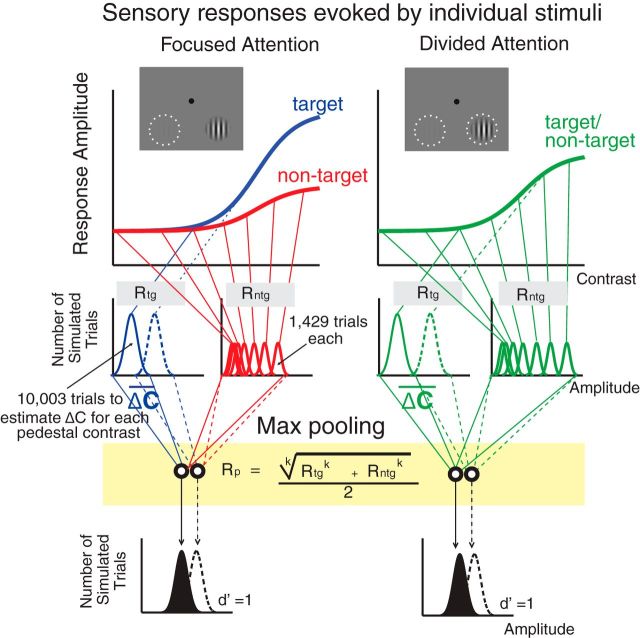Figure 5.
Testing the efficient readout model. Psychophysical contrast discrimination thresholds were estimated based on the CRFs measured by ERP responses (P1 and LPD components) using the max-pooling rule (Eq. 10; yellow box in the figure). The exponent of the max-pooling rule (k) determines the differential weight given to responses to target (Rtg) and nontarget stimuli (Rntg) in each interval, which are later pooled into a single neural output (Rp). We used an ideal observer model that selected the interval with the highest Rp to determine the contrast increment value (Δc) that yielded 76% (or d′ = 1) across 10,003 simulated trials at each target contrast. We first set k = 1 to examine how well sensory gain alone can estimate changes in the observed contrast thresholds. Finally, k was allowed to increase from 2 to 70 to determine whether the increase in differential weighting as implemented by the max-pooling rule is better at predicting changes in the behavioral data.

